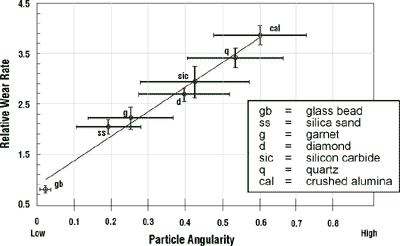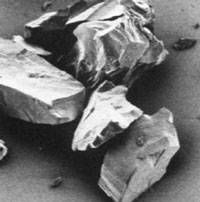Tags: particle counting, contamination control
View the full article in PDF:
A Much Closer Look at Particle Contamination (PDF)
This isn’t your usual article on how important clean oil is to lubricant health and machine reliability. Yes, we are going to talk about particle contamination, but we’re going to take a much closer look at the destructive traits of this nearly invisible material that cohabitates with our lubricants.
As it turns out, there is a lot more to particles than their size and count. This column will peer into the intricacies of the physical and chemical properties that make up and characterize solid particle contamination.
I’ll begin by discussing ten particle characteristics that should be important to Tribologists analysts and lubrication professionals. Each of these characteristics or traits influences the health of lubricated machinery. While the name of the trait may be familiar, the damage it causes may not be. Let’s start down the list:
Particle Characteristics
Particle Size. This is usually defined as a particle’s equivalent spherical diameter in microns (micrometers) and characterizes the ability of the particle to bridge the working clearances of moving machine surfaces. When large particles get crushed into smaller particles, they tend to get closer in size to a machine’s working clearances. The closer the particle size is to these working clearances, the more it enters the gap and causes abrasion or surface fatigue to opposing surfaces. For instance, a single 40-micron particle can theoretically be broken into 512 individually destructive five-micron particles.
Surface Area. When large particles break into many smaller particles, the cumulative surface area in contact with the oil increases manyfold. For instance, if you break a particle into 100 equal-size pieces, you have roughly 4.5 times more interfacial surface area. So in the example above, a 40-micron particle, when broken down into five-micron particles will produce eight times more surface area in contact with the oil. Why is this important? The more surface area relative to particle mass, the slower the particle settles (longer residence time in the oil), the more it attracts and emulsifies water, the more it can incite catalytic reactions with the oil, the more it can tie up the performance of polar additives (like antiwear agents, rust inhibitors and the like), and the more air bubbles it can nucleate, inhibiting their efficient detrainment from the oil. The list could
go on.
Particle Shape/Angularity.
To some of you, this may seem to be of no real importance, but in the world of Tribology, it is amazingly central to the wear rate caused by particles. Spherical-shaped particles are like ball bearings, they may cause surface indentations but are much less likely to cut or abrade. On the other hand, particles with high annularity (possess sharp, acute angles between facets) are far more prone to impart three-body abrasion (Figure 1).

Angular particles are generally caused by the crushing (comminution) of large particles into smaller particles (Figure 2). If a spherical particle were broken into 100 smaller particles having the general shape of cubes, this would expose sliding machine surfaces to a wrecking crew of 800 annular edges.

Hardness
Hardness relates to a particle’s compressive strength, that is, its resistance to deformation (plastically or elastically) or fragmentation by crushing. Particle hardness relative to surface hardness largely defines its ability to cause wear and fatigue. As a point of reference, common dirt particles consist largely of silica and alumina particles which are harder than a hacksaw blade (high-speed steel). Only ceramic surfaces found on some bearings and cam followers would be of similar hardness. The relative hardness of common particles is shown in Table 1.
...Continued
View the full article in PDF:
A Much Closer Look at Particle Contamination (PDF)

